Phenomenal Women: Exhibiting Greatness
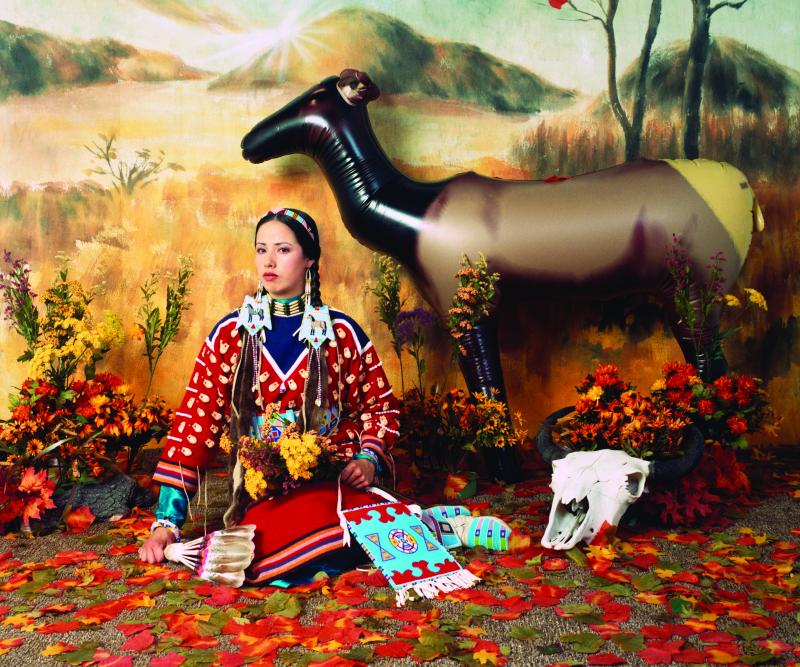
Women’s History Month is a time to celebrate all that women have accomplished – and a time to consider all that there is left to do. Gender equality remains elusive, including in the arts. An Artnet study revealed that only 14 percent of exhibitions between 2008 and 2018 featured a solo woman artist or, in group exhibitions, predominantly women artists. Our own research reports pay disparities in the field, with female visual artists earning 74 cents for every dollar a male visual artist earns.
While the statistics are disappointing, there are inspiring examples of exhibitions featuring women artists and women's history, including those featured below. We hope these examples serve as a reminder of what is lost when these stories aren't told.
- Wendy Red Star: The Maniacs (We're Not the Best, But We're Better Than The Rest) – New Mexico State University put on this exhibition from multidisciplinary artist Wendy Red Star (Apsáalooke (Crow)) in 2018 with funding from an Arts Endowment grant. Red Star's family and heritage play a huge role in her life and career. The Maniacs drew inspiration from her father’s career as a rock musician, while her grandmother, who sewed traditional Apsáalooke regalia and beadwork, has been an enormous influence throughout her life. She also collaborates with her daughter Beatrice, pictured below. Red Star discussed her artistic path with the Arts Endowment in 2018, including how she works to make space for other Native women artists. “I want [Native women] to have a place and a position within the art world. I don’t want it to be this anomaly, or special division,” she said. Read the rest of the interview with Red Star here.
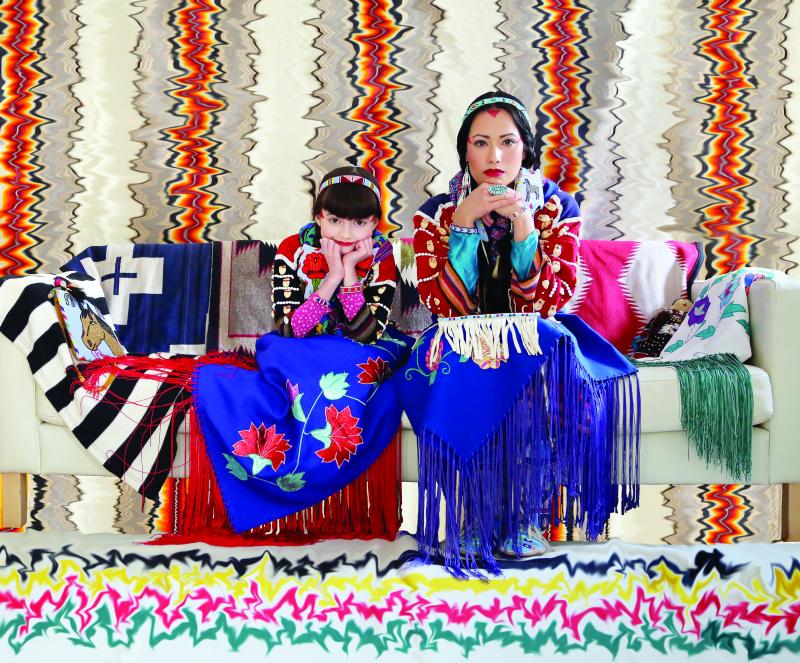
Apsáalooke Feminist #2 by Wendy Red Star, with her daughter Beatrice. (c) Wendy Red Star
- Flood Lines - The Parthenon Museum displayed this exhibition of artist Tasha Lewis's work in 2020 with funding from an Arts Endowment grant. The exhibit featured sculptures modeled after the artist’s own body. Lewis's work is inspired by ancient Greek sculptures, but Lewis made a point of including body hair as a means of subverting patriarchal perspectives and beauty ideals. “I can only really start with thinking about my own body and trying to process my own anxieties and feelings about being a bodied woman,” Lewis said. Read the rest of the interview with Lewis here.
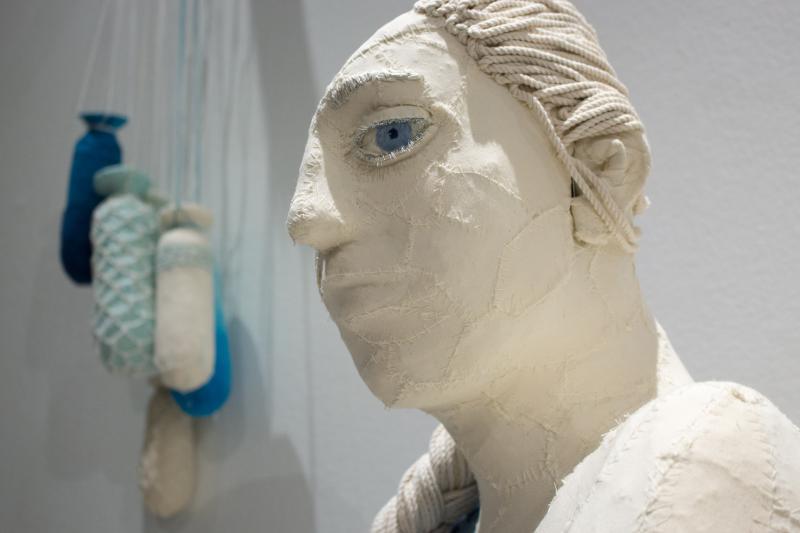
Close-up of Tidal Bather III (2018) by Tasha Lewis. Plaster gauze cast from mold of artist’s body, wood, mesh, fabric, laser-cut fabric, wire, cotton cord, embroidery floss, thread. Photo by Tasha Lewis - One Life: Marian Anderson – This exhibit was on view at the National Portrait Gallery (NPG) in 2020 with funding from an Arts Endowment grant. The exhibit included photos, paintings, and objects from the famous contralto’s life. While Marian Anderson is perhaps best known for her performance on the steps of the Lincoln Memorial on Easter Sunday in 1939, this exhibit looked at the entire span of her life and career. “[The exhibit] looks at the overview of her career and how these smaller moments can have an impact as a cumulative effect,” said Leslie Ureña, associate curator of photographs at the NPG. “Every step of the way is an incremental step to breaking down different barriers.” Learn more about Anderson and the process of curating this exhibit here.
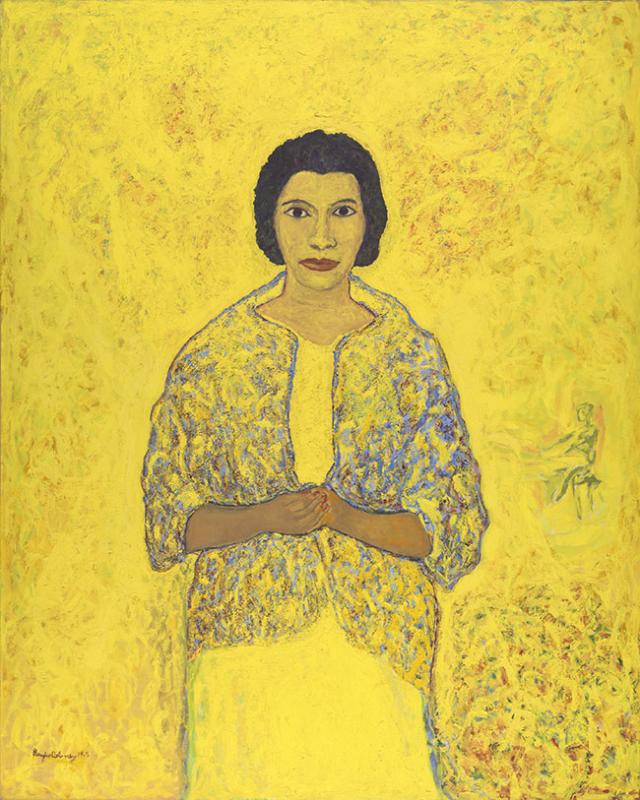
Marian Anderson by Beauford Delaney, oil on canvas,1965. Virginia Museum of Fine Arts, Richmond, J. Harwood and Louise B. Cochrane Fund for American Art. Photo by Travis Fullerton © Virginia Museum of Fine Arts. Estate of Beauford Delaney, by permission of Derek L. Spratley, Esquire, Court Appointed Administrator
- Votes for Women: A Visual History – This exhibit was on view at Brandywine River Museum of Art in 2020 with funding from an Arts Endowment grant. Presented online, the exhibition highlighted the visual history of the women’s suffrage movement, including costumes, banners, illustrations, photographs, and other important objects. The exhibition also featured a mural, Hidden Figures of the Suffrage Movement, which included 14 portraits of women who have been historically unrecognized for their contributions to the movement. “We like to think of that as a conversation starter. There's a conversation that's still to be had in history among citizens, at institutions, libraries, universities about the role that women of color, or in the 1960s, people of color played in securing the rights of others to vote,” said Amanda C. Burdan, curator at Brandywine River Museum of Art. Learn more about the exhibition here.
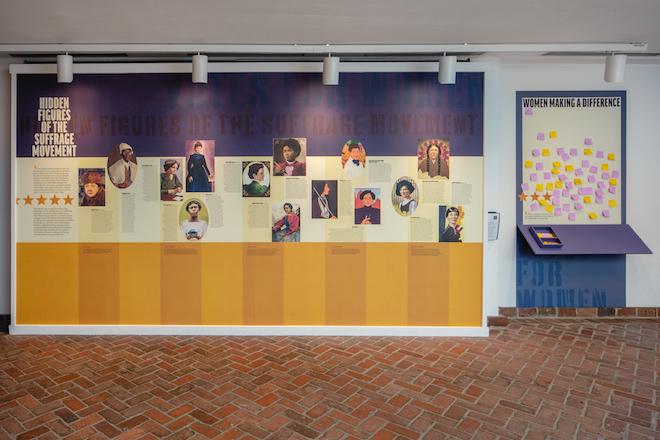
Hidden Figures of the Suffrage Movement is a mural on view as part of Votes for Women: A Visual History at the Brandywine River Museum of Art. Photo courtesy of Brandywine River Museum of Art - Women of Abstract Expressionism - This exhibit was on view at the Denver Art Museum in 2016 with funding from an Arts Endowment grant. The exhibit featured 12 Abstract Expressionist women painters, including Lee Krasner and Elaine de Kooning. Both Krasner and de Kooning sacrificed their careers to manage their husbands'. Now, Jackson Pollock and Willem de Kooning names are synonymous with the Abstract Expressionism movement their wives also helped to build. “While there have been other shows highlighting women artists, I think Women of Abstract Expressionism is especially relevant because these women participated in the development of not only the first American-grown modern art movement, but a movement always characterized by its male-ness," said Denver Art Museum Curator of Modern Art Gwen Chanzit. Read more about the women of Abstract Expressionism here.
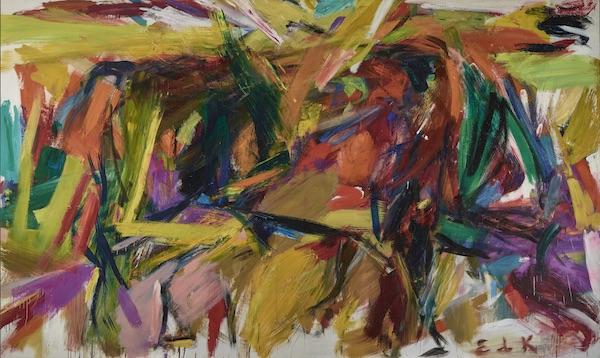
Elaine de Kooning, Bullfight, 1959. Oil paint on canvas, 77-5/8 in. × 10 ft., 10-1/2 in. (197.17 × 331.47 cm). Denver Art Museum: Vance H. Kirkland Acquisition Fund, 2012.300. © Elaine de Kooning Trust
As we celebrate Women’s History Month this March, the National Endowment for the Arts will shine the light on some phenomenal women, past and present, through the agency’s blog, podcast, and social media channels. While the stats may continue to be disappointing in terms of equity, we believe that as we work to address those disparities it’s also important to celebrate the impact women have made and continue to make in the arts. From Phillis Wheatley, an enslaved woman who was also one of the best-known poets in pre-19th-century America to dancer and choreographer Martha Graham, whose work lives on not only through her dancers but through the company’s venture into mixing dance with technology, we’re celebrating women who, to borrow from Maya Angelou’s famous poem “Phenomenal Woman” have fire in their eyes and joy in their feet.




